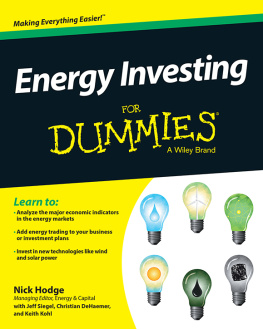Glossary
actinide: an element of atomic number 89 (actinium) orhigher
BTU: British Thermal Unit; 3412 BTU = 1 kWh of energy
BWR: boiling water reactor, LWR at ~60 atmospheres pressure
C: Celsius, temperature relative to water freezing
CANDU: Canadian deuterium uranium reactor
CCGT: combined cycle gas turbine
DMSR: denatured molten salt reactor; contains U-238
DOE: US Department of Energy
EIA: DOE Energy Information Agency
Flibe: fluoride salts of lithium and beryllium
FHR: fluoride high temperature reactor
G: giga, prefix meaning 1,000,000,000
GDP: gross domestic product, annual value of goods andservices
Gt: gigatonne, 1,000,000,000 tonnes
GW: gigawatt, 1,000,000,000 watts
ha: hectare, area of a 100 x 100 meter square
HEU: highly enriched uranium, over 20% U-235 or 12% U-233
INL: Idaho National Laboratory
J: joule, a unit of energy = 1 watt-second
K: Kelvin, unit of temperature, relative to absolute zero, C+ 273
k: kilo, prefix meaning 1,000
kW: kilowatt, 1,000 watts, = 3412 BTU
kWh: kilowatt-hour, the energy of 1 kW of power flowing onehour
LEU: low enrichment uranium, under 20% U-235 or 12% U-233
LFTR: liquid fluoride thorium reactor
LNT: linear no threshold, a model of radiation health risk
LWR: light water reactor, nuclear reactor cooled by ordinarywater
M: mega, prefix meaning 1,000,000
Mt: megatonne
MSR: molten salt reactor
MW: megawatt, 1,000,000 watts
MW(e): MW of electric power
MW(t): MW of thermal power (heat flow rate)
NGCT: natural gas combustion turbine
OECD: Organization for Economic Cooperation and Development
ORNL: Oak Ridge National Laboratory
PB-AHTR: pebble bed advanced high-temperature reactor
PWR: pressurized water reactor, LWR, ~160 atmospherepressure
quad: 1 quadrillion BTUs
RBMK: Russian high power channel type nuclear reactor
rem: Roentgen equivalent man, 0.01 Sv
Sv: Sievert, absorbed energy per kilogram of biomass
T: tera, prefix meaning 1,000,000,000,000
t: tonne 1000 kilograms, about 1.1 tons
TCF: trillion cubic feet; 1 TCF natural gas contains 1 quad
ton: 2000 pounds
transuranic: an element of atomic number 92 (uranium) orhigher
W: watt, a unit of power, or energy flow rate
W :work, a product of kinetic energy
Foreword
THORIUM is the name of a heavy metal element that can release abundant energy, butthorium is only part of the story. The key technology is the molten saltreactor , enabling a fluid fuel form, reducing costs and enabling energycheaper than from coal.
The subtitle, energycheaper than coal presents the idea that economics and innovationare the means to displace coal burning for electric power. To check even moreCO2 emissions, thorium energy must be cheaper than natural gas, as well. Andfor economically sustainable clean energy, thorium energy must be cheaper thanwind, solar, or biofuel energy.
I studied mathematics and physics as a college undergraduateand graduate student, then spent my working career in information technology.After retiring back to Hanover NH I became interested in the continuing worldenergy and climate crises. I determined that nuclear power was muchunderutilized as a solution to these difficult problems and began making presentationsabout advanced nuclear power, including the pebble bed reactor.
With the rise of environmentalism and national focus onrenewable energy I decided to learn more about these technologies. For fouryears I developed and taught a course for members of Dartmouth ILEAD, a programof continuing education at Dartmouth College. The course, Energy Policy and Environmental Choices:Rethinking Nuclear Power, reviewed fossil fuels, renewable energy sources,and nuclear power. It was followed by another course, Energy Safari,where we studied then visited many power plants: solar, wind, biomass, coal,hydro, nuclear, and natural gas.
In preparing the courses I came across several, advancednuclear power technologies not known to the general public. Of these Iconcluded that molten salt reactors have the possibility of providing electricitycheaper than coal. This liquid fuel reactor can readily handle a wide varietyof fuels, including thorium, uranium, plutonium, and waste from conventionalnuclear reactors. I learned more about the liquid fluoride thorium reactor(LFTR) at the










